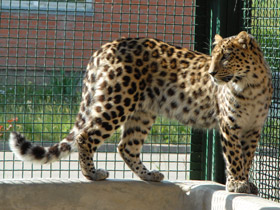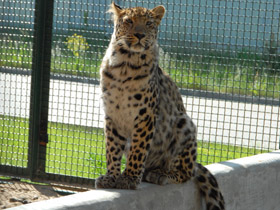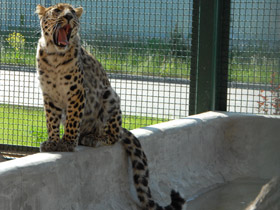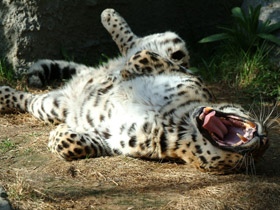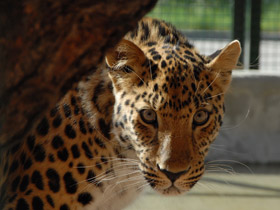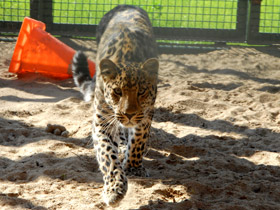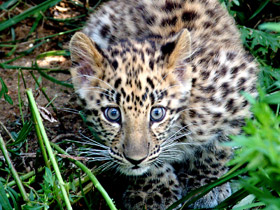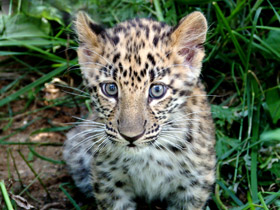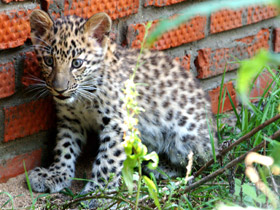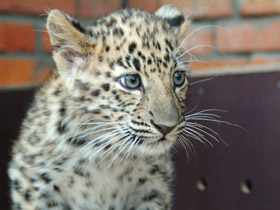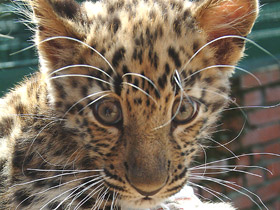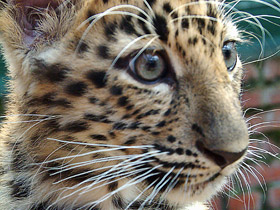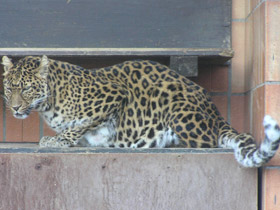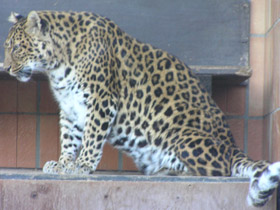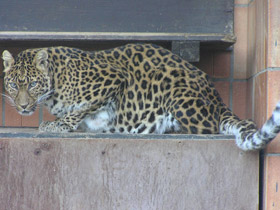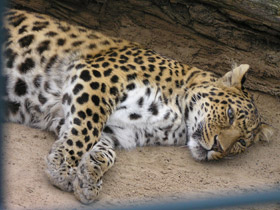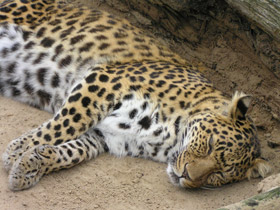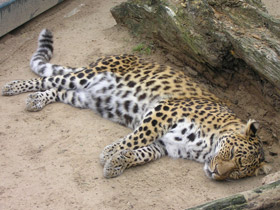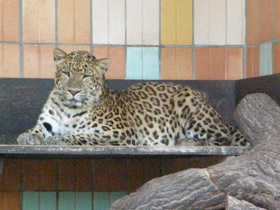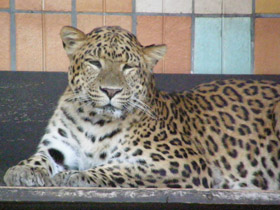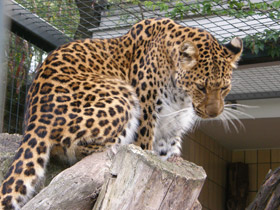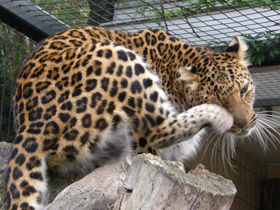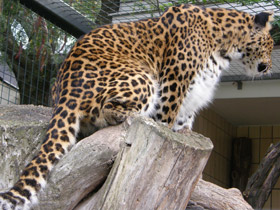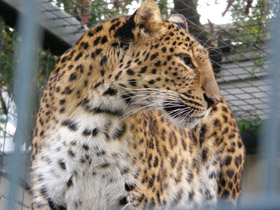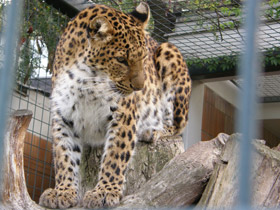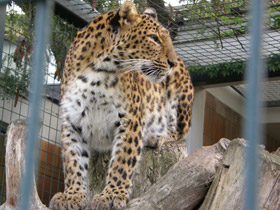Amur leopard - Panthera pardus orientalis
The Far Eastern, or Amur leopard occurs in the forest ecosystems of the Russian Far East. Unfortunately, this northernmost subspecies of leopard is threatened by extinction from the wild. Far Eastern leopard is listed as critically endangered by the International Union for the Conservation of Nature (IUCN), and was long time ago included in the Red Book of the Russian Federation. Hunting of the Far Eastern leopards was banned as early as in 1956, but in spite of this, no more than 50 individuals of this species remain in the wild. Degradation of natural habitats and continuous poaching of leopards are the main threats for the survival of these rarest carnivores.
Far Eastern leopard is incredibly beautiful and gracious cat, with thick fur, flexible strong body, long tail, and powerful paws with retractable claws (Pictures 1, 2, 2-а). Far Eastern leopards live in a cold climate therefore it is not surprising that they have extremely long and warm fur (in winter time the hairs are over 5 cm long on the back, and over 7 cm long, on the underside). The diet of the Far Eastern leopard consists mainly of wild ungulates: sika deer and roe deer, and less often, red deer calves or young wild bores. However, the Far Eastern leopard may hunt on many other animals, including badgers, raccoon dogs, hares, Siberian musk deer, foxes, Siberian weasels, squirrels, hedgehogs, grouses, and pheasants. Leopards are solitary hunters, except for the females with subadult cubs. These animals have very good eyesight and are able to see a prey from the distance of up to 1.5 km. Like leopards of other subspecies, the Far Eastern leopard can easily climb on the tree with its kill. This animal can live without food for quite long periods (up to 20 days).
Far Eastern leopards are territorial carnivores: male leopards use home ranges with the size of 500 km², while home ranges of the females are 4-6 times smaller. Territorial conflicts of the leopards are characterized by extreme severity and may result in an injury and even death of one of the fighting animals, but home ranges of a male and several females usually overlap. Far Eastern leopards are polygamous animals, with one male often breeding with several females. After a three-month of gestation, a female finds a den located in a small cave with narrow openings, rocky crevices or tree trunk, and gives birth to 1-3 cubs. The cubs start crawling on the 12th-15th day and can come out of the den by the age of two months. Breeding the Far Eastern leopards in zoos is aimed at sustaining genetic and physical health of the captive population (Pictures 6-11).

















